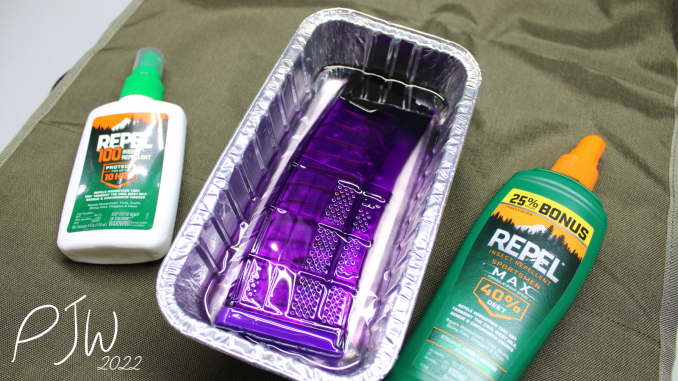
In my youth, I had issues with DEET, and translucent Lancer mags. DEET is a common component in most bugsprays, and can have negative effects on polymers. I have lived in the coastal swamp of Delaware for all of my life, so bugspray is a commonly used item here. In the past, I had issues of DEET getting onto older Lancer mags, causing breakdowns of the polymers. Issues such as cratering, and structural weakness would develop after dousing in DEET.
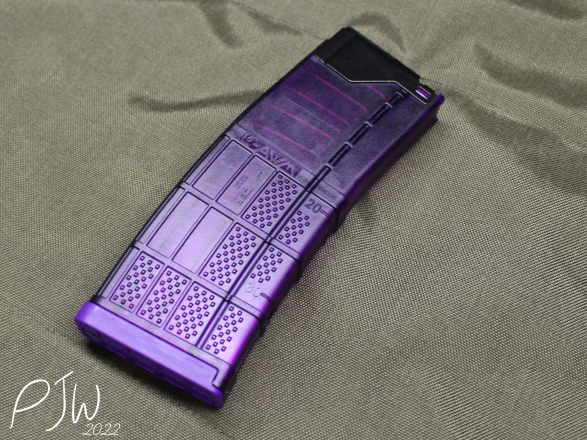
Well, I wanted to find out what would happen if I took a current production Lancer mag, and gave it a DEET bath. How’d it do?
A Very DEET-y Lancer Bath
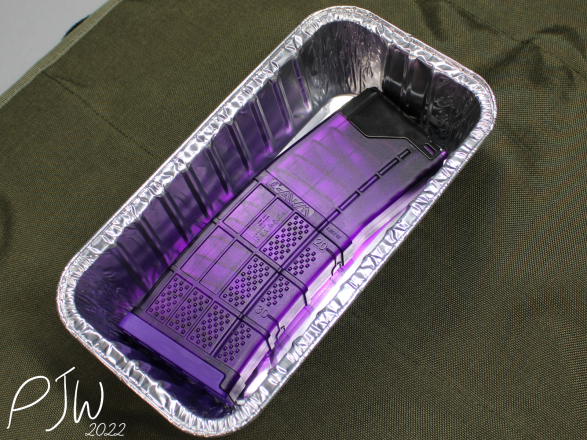
The Lancer I used was a freshly purchased, April 2021 production purple mag. I chose it because it looks obnoxious, and idiots love the hypebeast colors. For the blend of DEET, I used 4 ounces of 98.11% DEET, and 7.5 ounces of 40%. Why this blend? It’s what I had on hand, and this test is kind of extreme anyway.
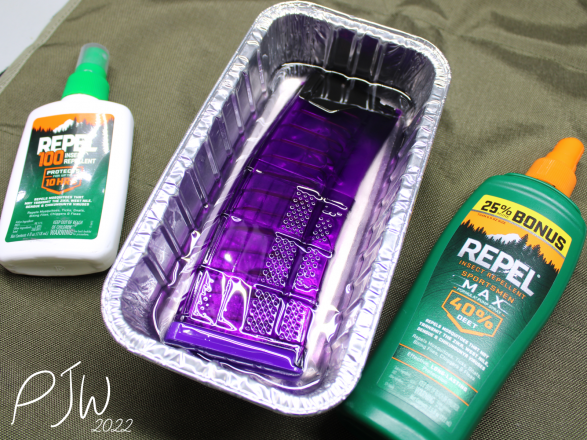
The purple Lancer took a DEET bath for just over two hours. Our bathtub was a small broad loaf pan, just the right size for this project. Needless to say, but my house stunk like crazy during this, so don’t try it at home. I recorded footage via my GoPro in the case that something would happen, but nothing crazy occurred. What did the bath time do to the Lancer mag?
The After-Bath
Truth be told, the mag held up better than I expected. I had pretty rough experience with Lancers in the past, so I was a little surprised. That being said, the mag did not come out unscathed.
Before resuming photography, I dumped the DEET, and gave the magazine a wash in the sink to remove any internal DEET. The mag developed some plastic dissolution during the dunk. The above photos show areas that had some discoloration due to the DEET, but no pock marks or cratering wore through.
Structurally, the mag just feels a little more floppy. Lancer’s aren’t known for being exceptionally rigid, but a squeeze on the mag body leads to more squish now. Will it effect long term durability? Maybe, but I won’t find that out for a while. DEET tends to attack the chains that bind polymers together on the molecular level, so we’ll see if there is more flop in time.
So the mag generally came out alright, just a little less purple and a little floppier.
The Verdict
This obviously isn’t a review for Lancer mags, just a goofy, exaggerated test.
I don’t like translucent Lancer magazines. I’ve used a myriad of AR mags over the years, and the Lancers have always been low-ranking for me. I think that the translucent body is a novelty, and that the design is weaker than competitors. The magazines are also more expensive than ones that I feel are better, such as PMAGs. Are they better than some of the dookie mags, like Hexmags and Amend2s? Obviously, but I don’t think that they stack up favorably against PMAGs or quality aluminum mags. The solid color, non-translucent Lancers rate higher than the translucent ones, but I still prefer PMAGs to them.
If you’ve got Lancers, keep using them till they fail, but I’ll stick to PMAGs, and the other mags I’ve had good experiences with. I’m just happy that this mag did better in DEET than the older ones.
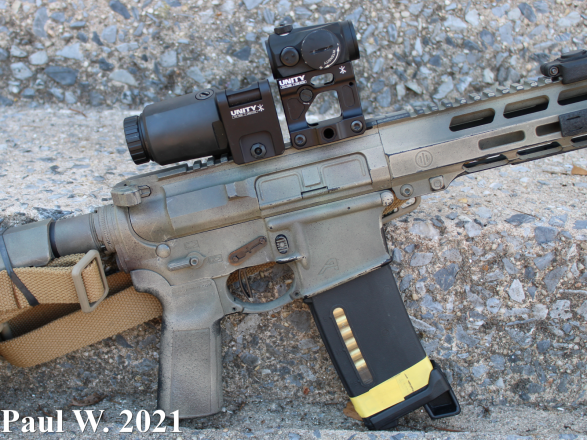


Be the first to comment